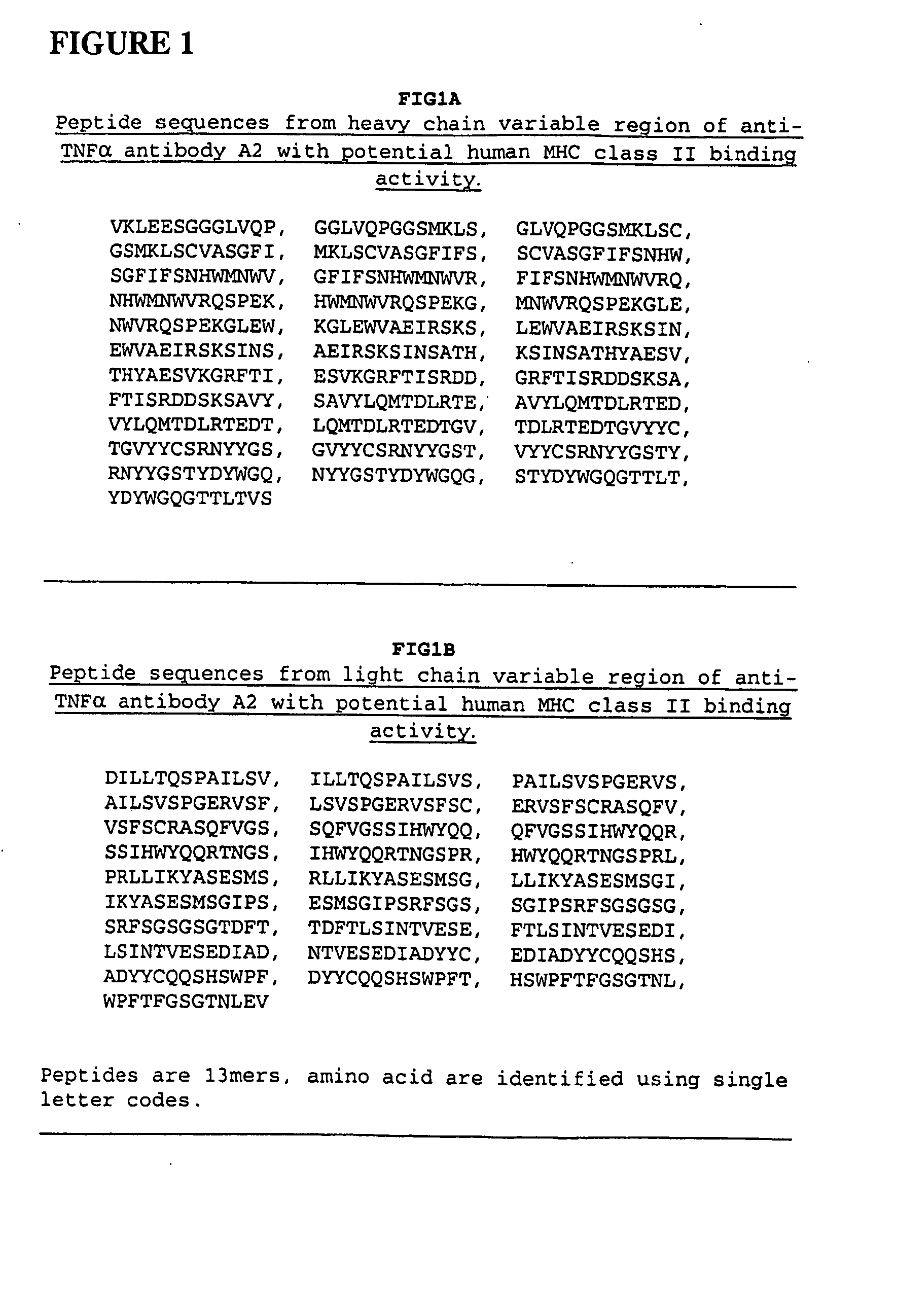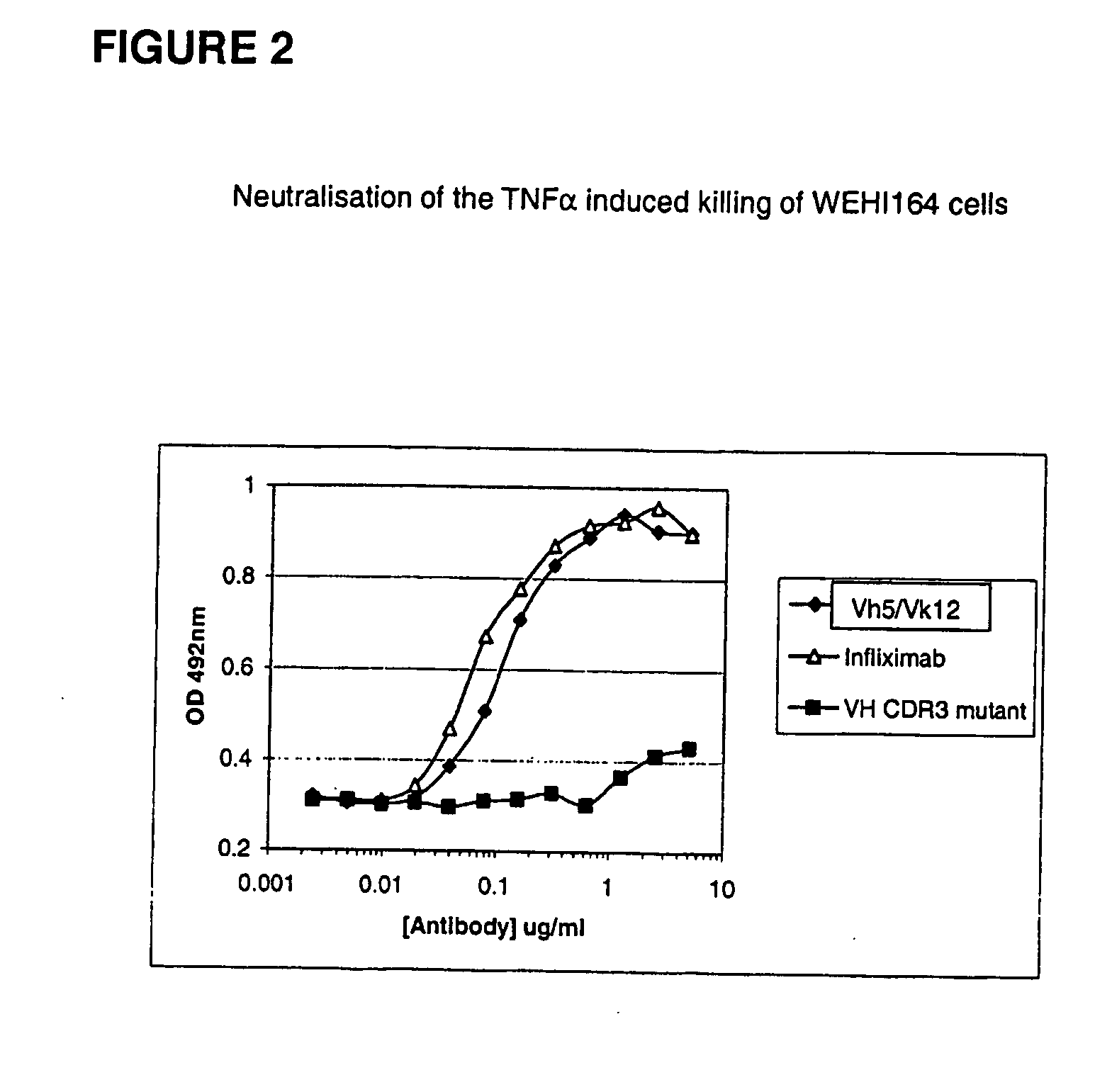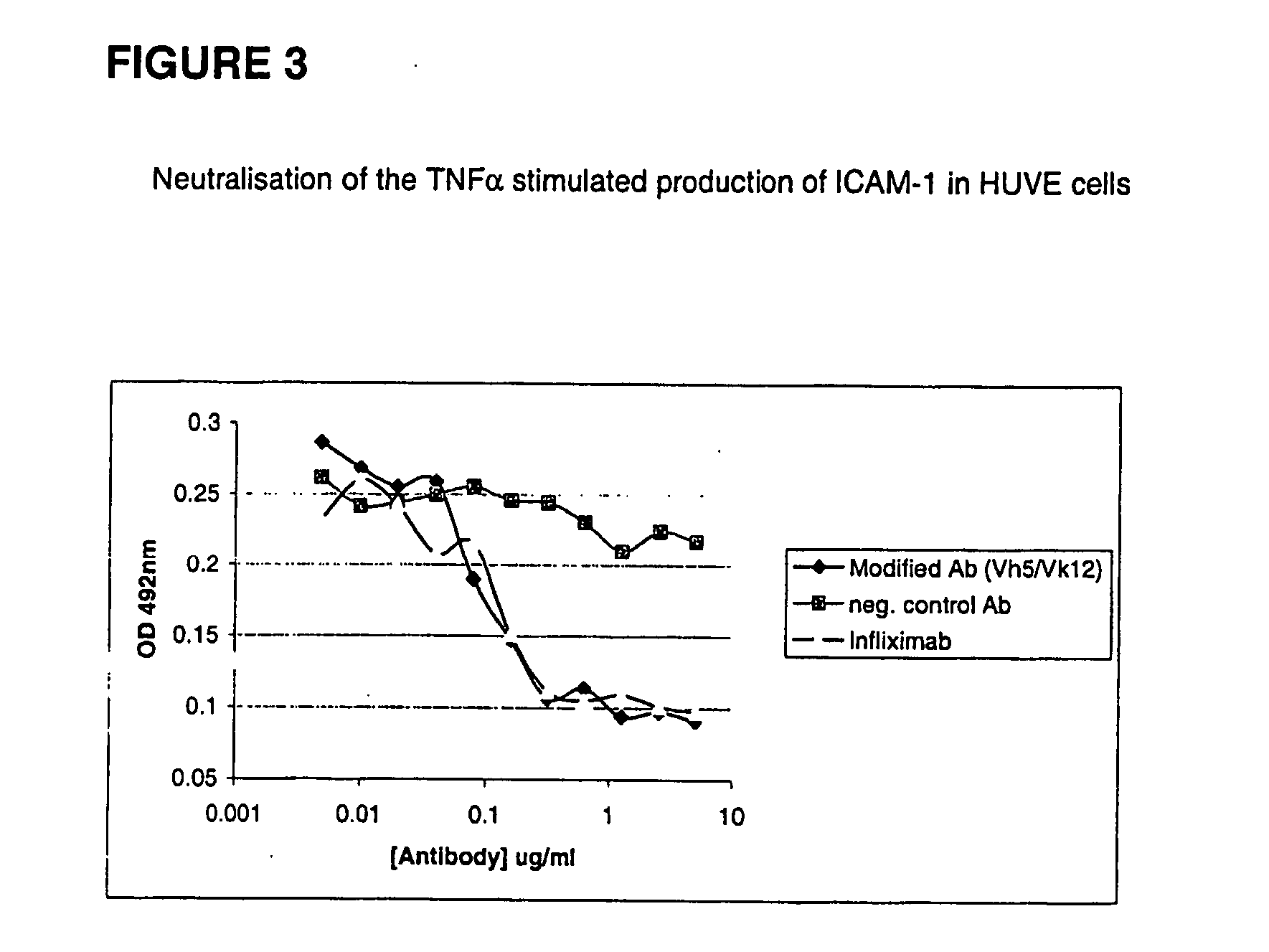Modified anti-tnf aplha antibody
a technology of aplha antibody and aplha, which is applied in the direction of antibody medical ingredients, immunological disorders, peptide/protein ingredients, etc., can solve the problems that peptides predicted to be able to bind mhc class ii molecules may not function as t-cell epitopes in all situations, and computational approaches to t-cell epitope prediction have in general not been able to predict epitopes with dp or dq restriction
- Summary
- Abstract
- Description
- Claims
- Application Information
AI Technical Summary
Benefits of technology
Problems solved by technology
Method used
Image
Examples
example 2
[0127] Identification of T-Cell Epitopes Using Synthetic Peptides and Nave Human PBMC In Vitro Proliferation Assays.
[0128] The interaction between MHC, peptide and T-cell receptor (TCR) provides the structural basis for the antigen specificity of T-cell recognition. T-cell proliferation assays test the binding of peptides to MHC and the recognition of MHC / peptide complexes by the TCR. In vitro T-cell proliferation assays of the present example, involve the stimulation of peripheral blood mononuclear cells (PBMCs), containing antigen presenting cells (APCs) and T-cells. Stimulation is conducted in vitro using synthetic peptide antigens, and in some experiments whole protein antigen. Stimulated T-cell proliferation is measured using .sup.3H-thymidine (.sup.3H-Thy) and the presence of incorporated .sup.3H-Thy assessed using scintillation counting of washed fixed cells.
8TABLE 1 Synthetic Peptides Heavy chain peptides Light chain peptides Peptide Peptide # Peptide Sequence # Peptide Sequ...
example 3
[0149] Construction of Anti-TNF Alpha Antibody Vh and Vk Genes.
[0150] The sequence of the antibody was derived from U.S. Pat. No. 5,656,272. The Variable domain heavy chain (Vh) and the variable domain light chain (Vk) genes were made by gene synthesis. Briefly, a panel of synthetic oligonucleotides were designed and synthesised. The genes were assembled using a ligase chain reaction (LCR) wherein the oligonucleotides featuring complementary ends were allowed to anneal followed by amplification and fill-in using a polymerase chain reaction (PCR). The PCR was driven by addition of an increased concentration of the flanking oligonuclotides to act as primers. The PCR products were assembled into full-length antibody genes by further PCR from vectors containing 5' and 3' immunoglobulin gene flanking regions and sub-cloning into expression vectors for expression of whole antibody. The assembled Vh and Vk genes served as templates for mutagenesis and construction of multiple variant antib...
example 4
[0154] Construction of Modified Antibody Vh and Vk Genes.
[0155] A modified Vk gene termed Vk1 containing the mutations L3Q, A9D, I10T, L11S, V13A, I58V, S74T, T77S, V78L, S80A, I83A, D85T and L104V was constructed by gene synthesis. Table 4 lists the oligonucleotides listed used in the assembly of Vk1. These oligonucleotides were used, together with OL393, OL394, OL395, OL400, OL401, OLA03, OLA05, OLA07 and OL408 (see example 3 above) in a gene synthesis reaction as to previously. The gene was cloned into the pGEM-T easy vector (Promega) and several clones were sequenced until a correct clone was obtained. Assembly of the full-length immunoglobulin gene and sub-cloning to the expression vector was as per example 3 with the exception that oligonucleotides OL411 and OL469 were used in the linking reaction for the Vk gene.
[0156] Additional mutations were introduced in the Vk gene to make further variant Vk genes. These mutations comprised: V19A, Q38H, R39T, S100G, N.sub.1O.sub.3K, V106...
PUM
| Property | Measurement | Unit |
|---|---|---|
| molecular weight | aaaaa | aaaaa |
| molecular weight | aaaaa | aaaaa |
| volume | aaaaa | aaaaa |
Abstract
Description
Claims
Application Information
 Login to View More
Login to View More - R&D
- Intellectual Property
- Life Sciences
- Materials
- Tech Scout
- Unparalleled Data Quality
- Higher Quality Content
- 60% Fewer Hallucinations
Browse by: Latest US Patents, China's latest patents, Technical Efficacy Thesaurus, Application Domain, Technology Topic, Popular Technical Reports.
© 2025 PatSnap. All rights reserved.Legal|Privacy policy|Modern Slavery Act Transparency Statement|Sitemap|About US| Contact US: help@patsnap.com



